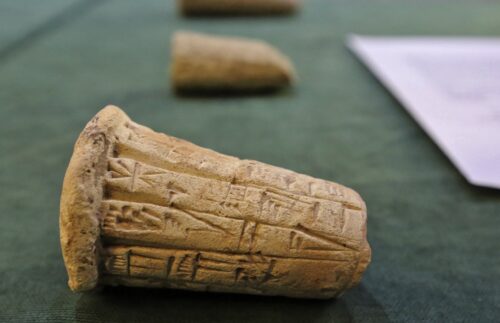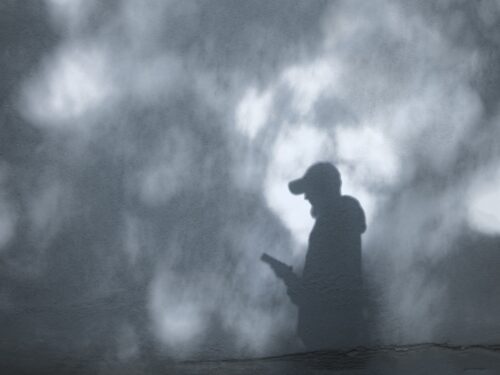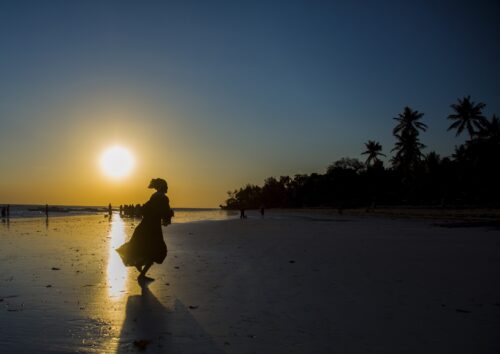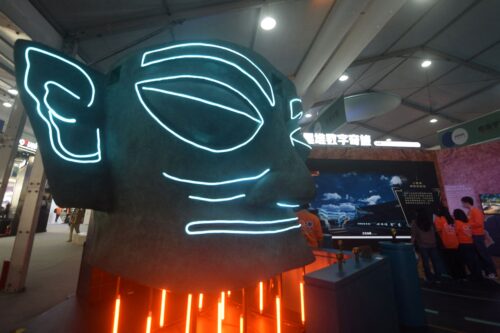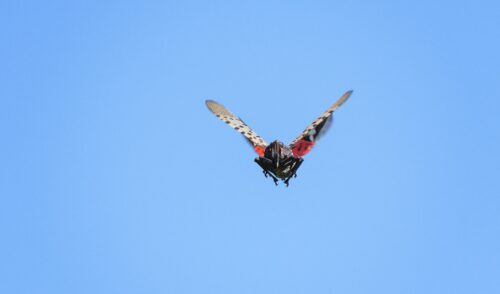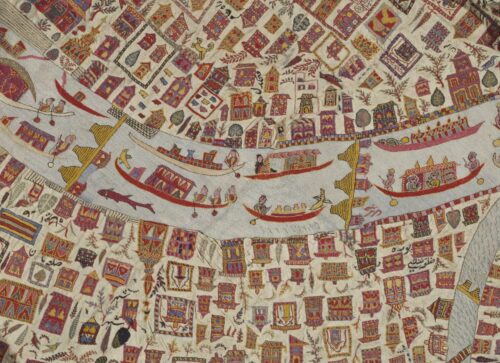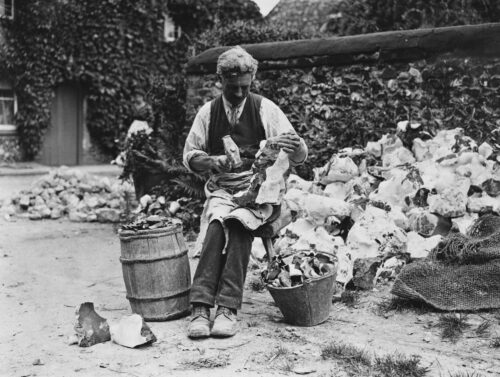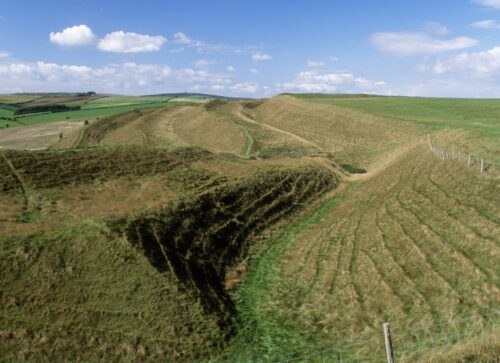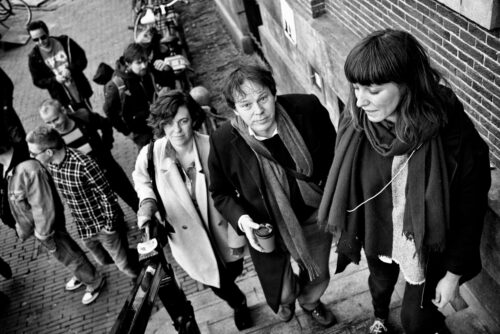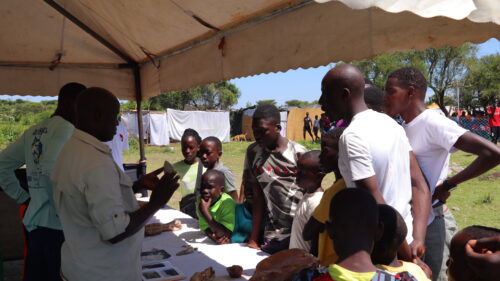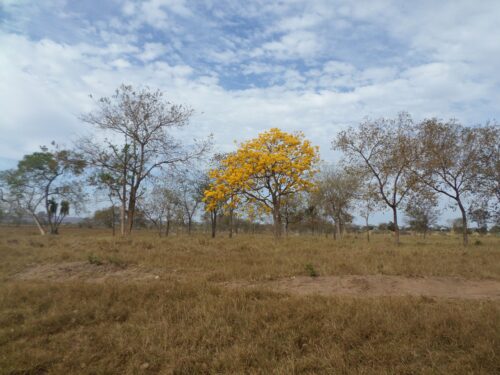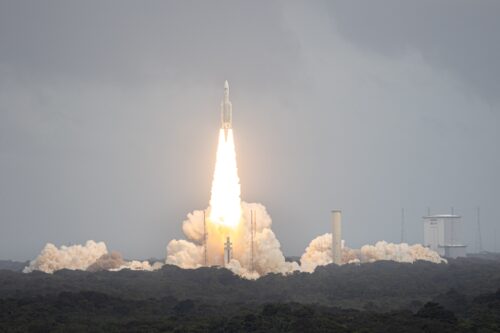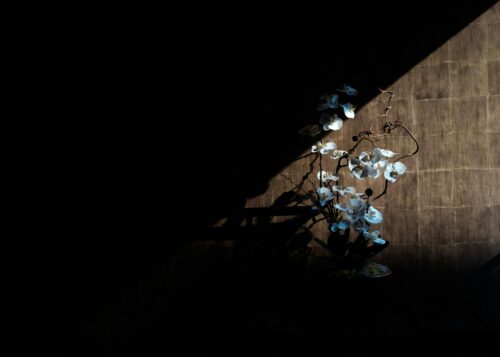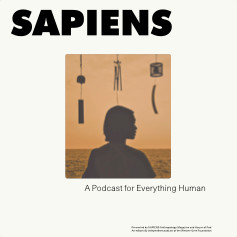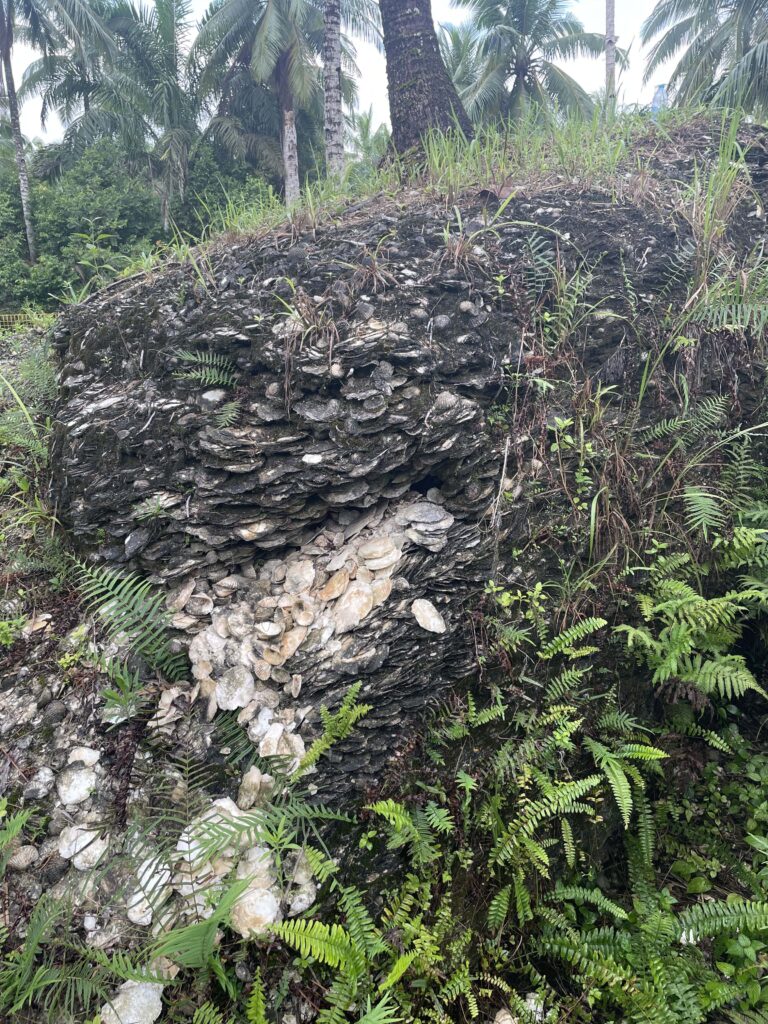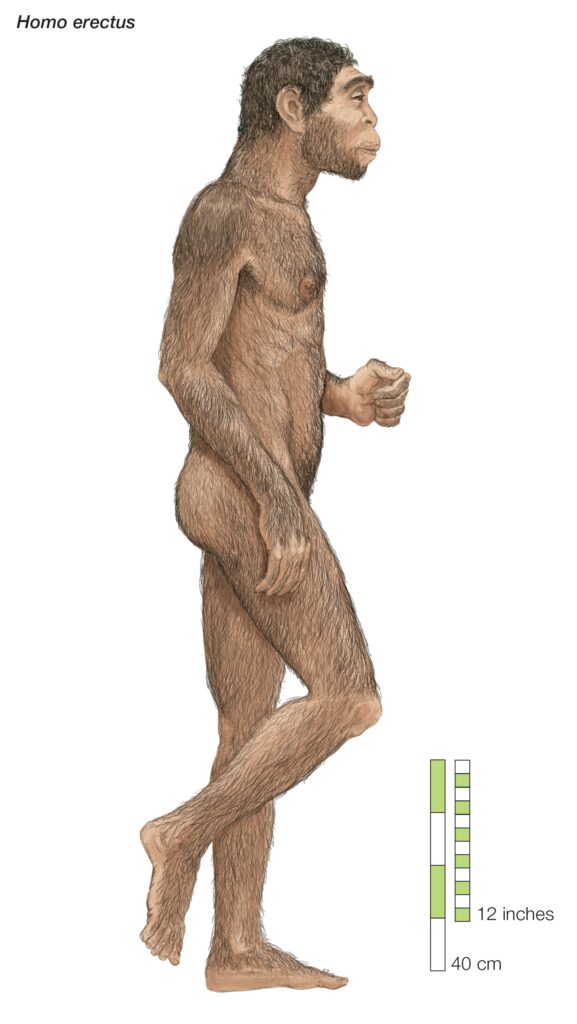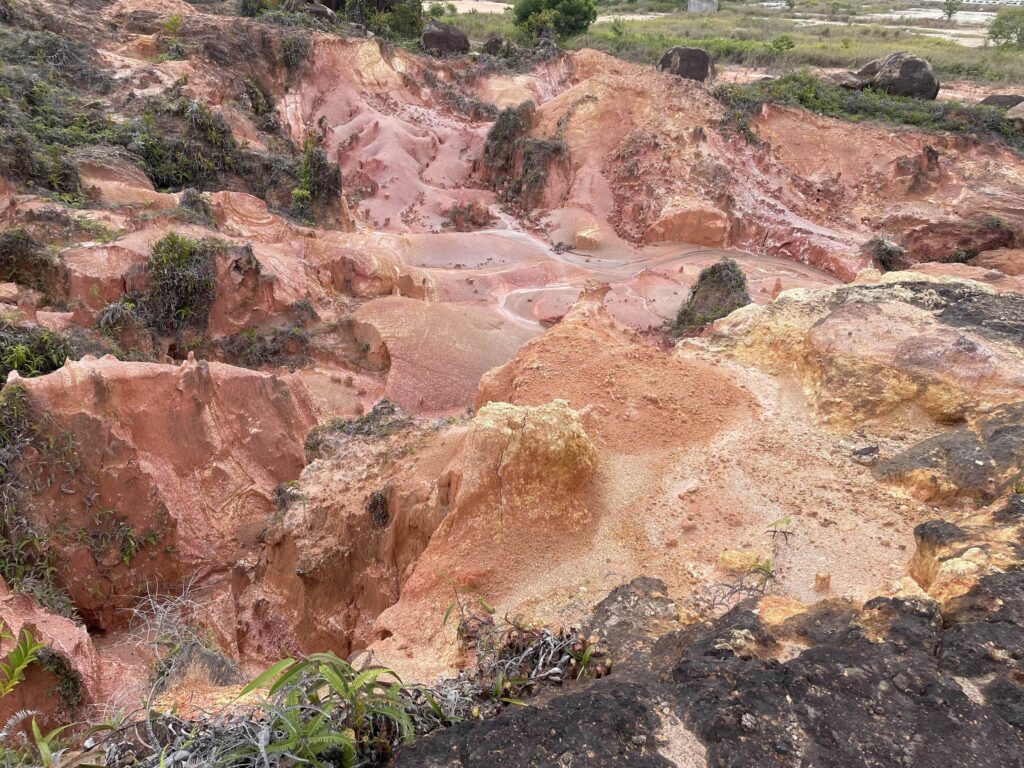The Vanishing Traces of Our Earliest Ancestors in Indonesia
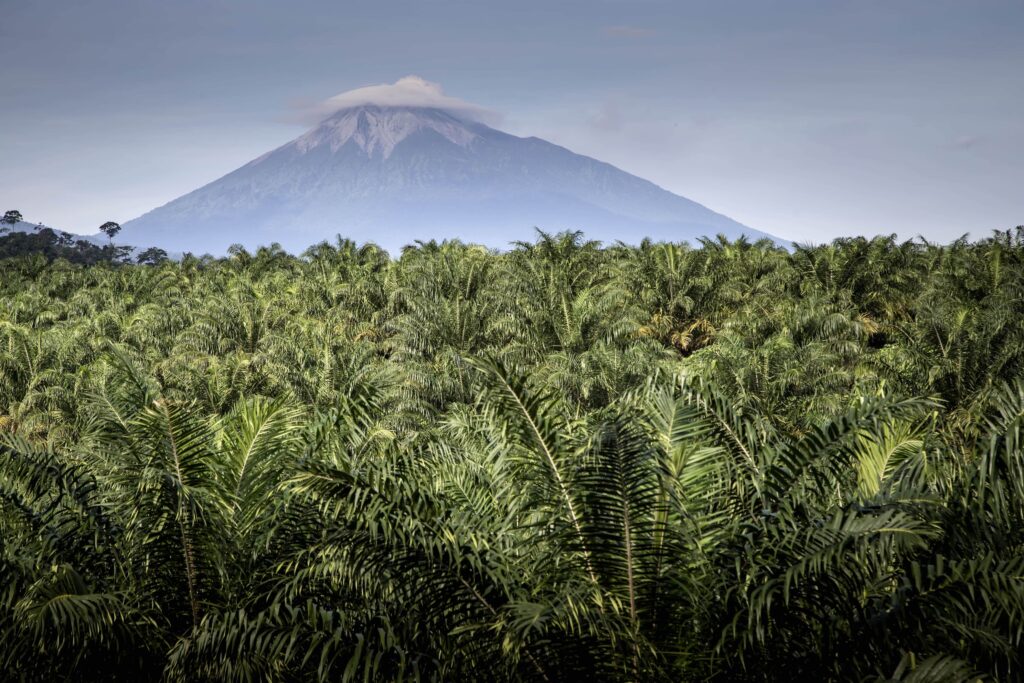
FROM THE AIR, endless rows of palm trees swallowed the topography as we flew over Bintan Island in the South China Sea. On the ground, an occasional fallen palm tree and piles of red palm fruit scattered along the roadsides. Indonesia is the world’s largest producer of palm oil and signs of the industry are everywhere in this palm-studded tropical island nation.
As a paleontologist, I traveled in May 2023 to the Indonesian islands of the Riau Archipelago, just south of Singapore, as part of an ongoing quest for evidence of Homo erectus, one of our oldest ancestors who once lived in this region from about 1.9 million years ago to 110,000 years ago. But due to widespread deforestation, palm oil plantations, and erosion, my team and I realized that much of the ancient landscape that remains above water has been obliterated—and finding signs of archaic life remains elusive.
One of our first stops was a palm oil plantation, where we had heard stories of massive shell mounds known as middens preserved among the palms. After driving through a maze of muddy tracks, we spotted a gigantic midden just beyond a fence in the center of the palm fields. The massive mound, composed of millions of discarded shells, rose out of the ground, standing at least 20 feet tall.
The midden is a testament to the volume of shellfish eaten by Hoabinhians. This diffuse and varied culture inhabited a vast area from Yunnan, China, to Sumatra, Indonesia, from about 40,000 to 2,000 years ago. Initial radiocarbon dating of the midden shells suggested Hoabinhians were active in this region from 12,550 years ago until about 1,700 years ago.
This site has thankfully been spared from destruction by the regional government when it was earmarked as a possible tourist attraction. While we were grateful that this impressive midden has been preserved, the government official accompanying us pointed out shells littering the landscape several hundred feet away. This and oral reports evidenced that two even larger middens once existed nearby. Sadly, these examples of a once widespread but still poorly known culture had been ploughed back into the earth.
For more than 20 years, Indonesia has been increasing its highly profitable monocultural farming practices, such as palm oil production, which requires mass deforestation. Between 1990 and 2020 for example, one province in Sumatra lost 4.63 million hectares of forest, more than the size of Kuwait, the Bahamas, and Montenegro combined. Meanwhile, palm oil fields grew sixfold, reaching 3.52 million hectares in 2020. These practices rake in billions of dollars per year. Palm oil generates about 2.5 percent of the country’s gross domestic product.
In addition to forests, these practices have destroyed archaeological evidence. And this proved to be a recurring experience as we explored Bintan and nearby islands for even earlier traces of our ancestors.
CLOSING THE KNOWLEDGE GAP
I’ve been working with a small team of Indonesian paleontologists from the Institute of Technology in Bandung for the last 10 years, seeking to uncover remains of ancient life in Sumatra and its surrounding islands. My team and I chose to explore the Riau Archipelago for the unique position it occupies in Sundaland, a giant land mass connecting much of modern-day Indonesia with Malaysia, Thailand, and the rest of Southeast Asia. The continental landmass of Sundaland was exposed during most of the Pleistocene, beginning 2.6 million years ago. Then, about 400,000 years ago, it began to be submerged. By about 12,000 years ago, the land was mostly underwater. H. erectus, our earliest ancestors to cross Asia, once roamed across this giant land mass.
Archaeologists first discovered signs of H. erectus in Java, Indonesia, in the 1890s. Later, they found a phenomenal range of fossil skulls in Zhoukoudian, China. However, there’s very little evidence of the species between these two far-flung locales. In Southeast Asia, researchers have suggested some dental remains and putative tools associated with H. erectus, but there’s limited physical evidence documenting their presence. An obvious reason for this gap is the submergence of Sundaland that began about 400,000 years ago, wiping away most migratory routes our H. erectus ancestors would have crossed.
But not all the routes.
When our team undertook some modeling of migrations to try to understand the paths that H. erectus may have taken through Sundaland when it was above water, they did indeed indicate that the path of least resistance between Mainland Southeast Asia and Java is now underwater. But depending on sea levels and the degree of subsidence, there are still a few places where these paths cross dry land today.
With possible pathways through the Riau Archipelago mapped out, our team set off for Bintan, Batam, Karimun Besar, Kundur, Lingga, and Singkep to see if we could find any traces of ancient hominins.
We knew our chances were slim—most of the spectacular discoveries in human evolutionary research in Southeast Asia have been made in limestone caves. Over the last decade, I have mainly searched for fossils in caves on the island of Sumatra, alongside Indonesian and Australian colleagues. The major exception has been the fluvial deposits of central Java, which have yielded remarkable tools and fossils of H. erectus.
But geology maps of the Riau islands show that they are dominated by granite, which is not an ideal rock type to preserve fossils. We also noticed significant deposits of lateralized soils and sediment, a rusty-red layer that tends to form in wet, hot tropical areas. These sediments formed from weathered granite and are acidic, not ideal for long-term preservation of bone.
Nevertheless, our geological maps indicated the possibility of finding Pleistocene sediments on some of these islands. And we knew from experience that geology maps are never completely accurate. So, we took our chances.
TRANSFORMED LANDSCAPES
I had never encountered islands or landscapes quite like those in the Riau Archipelago. It seemed like every square inch of the islands had been transformed. Where normally I would expect to see the jungle encroaching on all sides, we encountered scrubby plains and barren grasslands.
Urbanization, mining, palm oil plantations, and small farms played a part. Still, they couldn’t fully explain the entirely human-made landscape we came across. The culprit—we later learned when researching the historical record—was gambier. This is an extract from the leaves of Uncaria gambir, a native plant in heavy demand from the middle of the 17th century as a tanning agent and dye.
The forests of the Riau Archipelago were cleared at a breathtaking rate to make way for this crop. Colonial reports from 1821 to 1870 indicate that up to 5 percent of an island was cleared in a single year at the height of production. Although some secondary regrowth occurred after the collapse of the gambier industry after the 1870s, the islands never really recovered.
As we explored island after island across the archipelago over a series of weeks, we struggled to find natural outcrops or any signs of past people because of this historical clearing. There were very few exceptions, including the great midden deposit in Bintan, as well as a few shards of pottery and stone tools found in an open site that are probably only a few thousand years old.
Significant signs of erosion also exacerbated the problem. Without natural forests and with high temperatures and humidity, weathering and sheet wash likely destroyed any archaeological remains that may have once existed. Today the modern equivalents of gambier—such as palm oil and timber plantations—and the relentless pursuit of profit means some areas are continuing to experience deforestation at the highest rates in the world.
We potentially solved a knowledge gap in H. erectus geography but not in the way we expected. And while we can perhaps attribute the lack of sites on the remaining islands of Sundaland to a small climbing shrub native to Southeast Asia, it also points to a larger issue: Relentless and unsustainable human practices have destroyed not just biodiversity, but also possibly the last remains of our shared ancient history in these islands.



